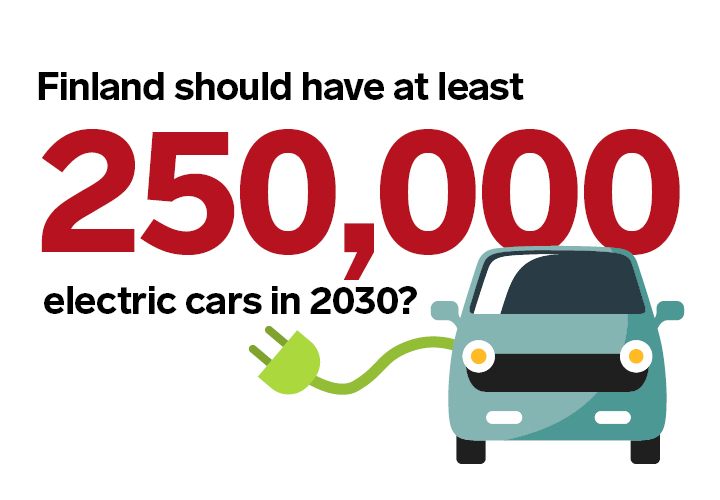
Finland is also beginning to notice the benefit of electric transport.
According to the target set by the Finnish government, Finland should have at least 250,000 electric cars in 2030. The objective of the Government’s energy and climate strategy is to cut imported oil use by 50% and completely phase out the use of coal in energy production. Finland has signed the Paris climate agreement and thus made a commitment to cut emissions, also with regard to transport.
With more than 100,000 electric cars already on its roads, Norway is the clear leader in electric transport. Use of electric cars is also growing fast in Sweden, Denmark and Estonia. Finland currently has approximately 2,500 chargeable cars. However, the share of hybrid cars increased by 150% last year and the share of battery electric vehicles by 40%. (Updated in January 2018: Amount of electric cars and hybrid electric vehicles in Norway 210,000 and in Finland 7,000.)
The Finnish government provides very little support for electric cars.
“A support package of at least 100 million euros is needed to ensure the success of the Government’s energy strategy. Possible methods include a direct consumer subsidy or some sort of employment vehicle benefit,” states Elias Pöyry, who coordinates the Electric Traffic project.
“For example, Norway reached its high growth figures by combining a generous tax policy with higher taxation of combustion engine vehicles. Thus, the subsidies place no additional burden on the budget.”
Smart charging plays a key role
“When Finland has 250,000 electric cars, electricity consumption is expected to increase by about 1 TWh per year. This is not a problem for the electricity system. For example, electricity consumption has decreased by 8 TWh over the past eight years. Both the transmission and distribution grids have been strengthened over the same period,” says Development Manager Jonne Jäppinen from Fingrid.
Simultaneous charging of several cars may cause problems locally. The solution to this is smart charging, which times the charging event to occur at the cheapest possible time in the household, for example, at night. Smart charging can take other loads into account: car charging may slow down if someone turns on an electric sauna heater in the house.
In the future, electric cars will be mobile battery storage devices. Electricity is cheapest in the Nordic countries when it’s windy. Charging an electric car at that time maximises the benefits of low-emission electricity production.
Emissions from electricity production will decrease throughout the life cycle of an electric car, because more emission-free energy, such as wind and solar power, is entering the electricity production system all the time.






